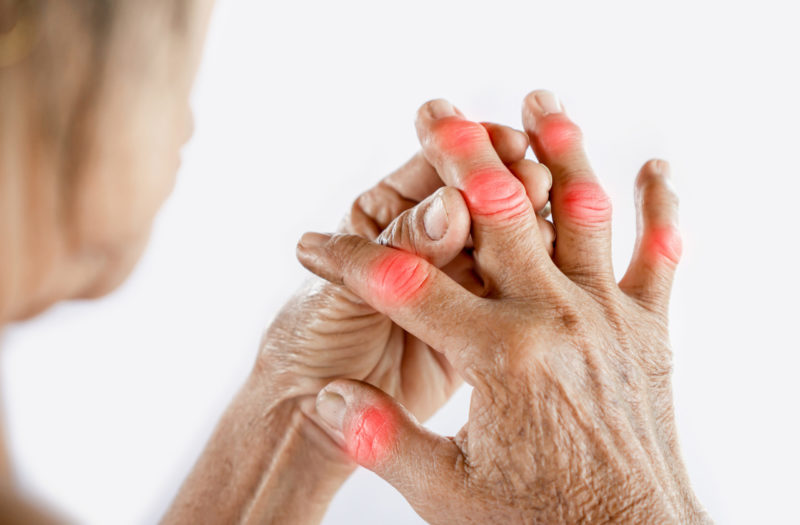Detecting and treating rheumatoid arthritis (RA) early is the best way to stop the disease from progressing and causing irreversible joint damage. It would be even better if doctors could detect RA in a preclinical phase, which means some symptoms may have started but the disease is not yet full-blown. If that were possible, there might be a way to prevent the development of RA or at least dramatically slow down the disease course.
Right now no one knows how to do that, though studies have shown that many people have circulating autoantibodies (associated with this autoimmune disease) for at least five years before they officially develop RA. Although it’s not possible to screen everyone for RA, it might make sense (and be feasible) to scan those who are especially high-risk. But what makes a person high-risk for rheumatoid arthritis? To help answer that, researchers from the U.K. focused in on those who are already known to have an above-average chance of developing RA: first-degree relatives of RA patients.
Having a close relative with RA doesn’t mean that you’re guaranteed to get it, but it substantially increases your risk. According to research, first-degree relatives of RA patients, such as a parent, child, or sibling, have four times the risk compared to the general population.
For this study, which was published in the journal Arthritis Research & Therapy, researchers evaluated 870 first-degree relatives of people with RA to see if they could identify characteristics that suggested preclinical RA. Participants completed a questionnaire about possible early symptoms, including joint pain and fatigue. They also had blood tests to check for the presence of autoantibodies associated with RA (anti-CCP and rheumatoid factor) as well as C-reactive protein (CRP), an inflammation marker.
The study revealed that 5 percent of the participants had autoantibodies and 14 percent had elevated levels of CRP — and that these blood test results often correlated to symptoms that suggest preclinical RA.
“Symmetrical and small joint pain were 11.3 percent and 12.8 percent higher, respectively, in those who were seropositive [which means having at least one autoantibody] and 11.5 percent and 10.7 percent higher in those with elevated CRP,” the authors wrote.
The authors concluded that “the presence of symmetrical and small joint pain in [first-degree relatives of RA patients] may be useful in identifying people at higher risk of developing RA.”
Although more research is needed, this study may move scientists one step closer to identifying those at greatest risk of RA. In the interim, if you have a close relative with RA and you’re experiencing small joint pain, it might be worth asking your doctor if you should have any screening tests for rheumatoid arthritis.
Track Your Symptoms with ArthritisPower
Join CreakyJoints’ patient-centered research registry and track symptoms like fatigue and pain. Sign up here.
Costello RE, et al. Symptoms in first-degree relatives of patients with rheumatoid arthritis: evaluation of cross-sectional data from the symptoms in persons at risk of rheumatoid arthritis (SPARRA) questionnaire in the PRe-clinical EValuation of Novel Targets in RA (PREVeNT-RA) cohort. Arthritis Research and Therapy. August 11, 2021. doi: https://doi.org/10.1186/s13075-021-02593-w.
Frisell T, et al. Family history of rheumatoid arthritis: an old concept with new developments. Nature Reviews Rheumatology. June 2016. doi: https://doi.org/10.1038/nrrheum.2016.52.
Rantapää-Dahlqvist S, et al. Antibodies against cyclic citrullinated peptide and IgA rheumatoid factor predict the development of rheumatoid arthritis. Arthritis Care & Research. October 7, 2003. Doi: https://doi.org/10.1002/art.11223.
Walsh N. What Factors Predict RA in First-Degree Relatives? MedPage Today. August 12, 2021. https://www.medpagetoday.com/rheumatology/arthritis/94008






